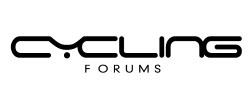C
Cncabej
Guest
Cancer is generally considered to be an abnormal growth of
cells caused by mutations in DNA induced by carcinogenic
substances, viral oncogenes, ionizing radiations etc.
Although evidence has been insufficient, and it has also
been argued that often this relationship was not seen, the
mutational theory of cancer is the explanation we find in
every textbook. A recent experiment raises doubts about the
validity of the dogma. Investigators show that mutation in
the Ha-ras-1 gene is sometime found in normal mammary gland
and is absent in cancerous cells. Here is the abstract
published in the Journal of Cell Science on March , 2 2004.
THE STROMA AS A CRUCIAL TARGET IN RAT MAMMARY GLAND
CARCINOGENESIS
Maricel V. Maffini1, Ana M. Soto1,*, Janine M. Calabro1,
Angelo A. Ucci2 and Carlos Sonnenschein1
A complex network of interactions between the stroma, the
extracellular matrix and the epithelium drives mammary gland
development and function. Two main assumptions in chemical
carcinogenesis of the mammary gland have been that
carcinogens induce neoplasia by causing mutations in the DNA
of the epithelial cells and that the alterations of tissue
architecture observed in neoplasms are a consequence of this
primary mutational event. Here, we use a rat mammary tissue
recombination model and the chemical carcinogen N-
nitrosomethylurea (NMU) to determine whether the primary
target of the carcinogen is the epithelium, the stroma or
both tissue compartments. Mammary epithelial cells were
exposed in vitro either to the carcinogen or vehicle before
being transplanted into the cleared fat pads of rats exposed
to carcinogen or vehicle. We observed that neoplastic
transformation of these mammary epithelial cells occurred
only when the stroma was exposed in vivo to NMU, regardless
of whether or not the epithelial cells were exposed to the
carcinogen. Mammary epithelial cells exposed in vitro to the
carcinogen formed phenotypically normal ducts when injected
into a non-treated stroma. Mutation in the Ha-ras-1 gene did
not correlate with initiation of neoplasia. Not only was it
often found in both cleared mammary fat pads of vehicle-
treated animals and intact mammary glands of untreated
animals, but it was also absent in some tumors. Our results
suggest that the stroma is a crucial target of the
carcinogen and that mutation in the Ha-ras-1 gene is neither
necessary nor sufficient for tumor initiation.
I am not predicting (although I am not excluding) that this
will start a chain reaction of experiments designed to prove
the EPIGENETIC origin of cancer, but it should make us
rethink what is real (production of proteins) and what is
fictious (determination of morphology, etiology of diseases,
etc.) on the role of genes in biology.
cells caused by mutations in DNA induced by carcinogenic
substances, viral oncogenes, ionizing radiations etc.
Although evidence has been insufficient, and it has also
been argued that often this relationship was not seen, the
mutational theory of cancer is the explanation we find in
every textbook. A recent experiment raises doubts about the
validity of the dogma. Investigators show that mutation in
the Ha-ras-1 gene is sometime found in normal mammary gland
and is absent in cancerous cells. Here is the abstract
published in the Journal of Cell Science on March , 2 2004.
THE STROMA AS A CRUCIAL TARGET IN RAT MAMMARY GLAND
CARCINOGENESIS
Maricel V. Maffini1, Ana M. Soto1,*, Janine M. Calabro1,
Angelo A. Ucci2 and Carlos Sonnenschein1
A complex network of interactions between the stroma, the
extracellular matrix and the epithelium drives mammary gland
development and function. Two main assumptions in chemical
carcinogenesis of the mammary gland have been that
carcinogens induce neoplasia by causing mutations in the DNA
of the epithelial cells and that the alterations of tissue
architecture observed in neoplasms are a consequence of this
primary mutational event. Here, we use a rat mammary tissue
recombination model and the chemical carcinogen N-
nitrosomethylurea (NMU) to determine whether the primary
target of the carcinogen is the epithelium, the stroma or
both tissue compartments. Mammary epithelial cells were
exposed in vitro either to the carcinogen or vehicle before
being transplanted into the cleared fat pads of rats exposed
to carcinogen or vehicle. We observed that neoplastic
transformation of these mammary epithelial cells occurred
only when the stroma was exposed in vivo to NMU, regardless
of whether or not the epithelial cells were exposed to the
carcinogen. Mammary epithelial cells exposed in vitro to the
carcinogen formed phenotypically normal ducts when injected
into a non-treated stroma. Mutation in the Ha-ras-1 gene did
not correlate with initiation of neoplasia. Not only was it
often found in both cleared mammary fat pads of vehicle-
treated animals and intact mammary glands of untreated
animals, but it was also absent in some tumors. Our results
suggest that the stroma is a crucial target of the
carcinogen and that mutation in the Ha-ras-1 gene is neither
necessary nor sufficient for tumor initiation.
I am not predicting (although I am not excluding) that this
will start a chain reaction of experiments designed to prove
the EPIGENETIC origin of cancer, but it should make us
rethink what is real (production of proteins) and what is
fictious (determination of morphology, etiology of diseases,
etc.) on the role of genes in biology.

